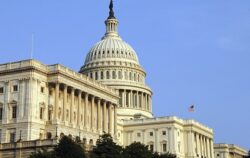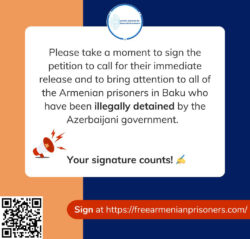Artsakh (Nagorno-Karabakh) Fact Sheet
Location:
- Artsakh, officially known as the Republic of Artsakh, is a landlocked region located in the South Caucasus.
History:
- Artsakh and its indigenous majority Armenian population have a rich historical and cultural heritage, dating back thousands of years.
- It became part of the Soviet Azerbaijan in the 1920s by order of Joseph Stalin.
- Prior to declaring independence, the region had a pre-war population of approximately 200,000 people, 77% of whom were Christian Armenians. The remaining 23% were a mixture of Muslim Azeri Turks and Kurds.
Geography:
- Artsakh is characterized by its mountainous terrain, lush forests, and picturesque landscapes.
- Stepanakert, the capital and largest city, serves as the political, cultural, and economic center of the region.
Economy:
- The economy of Artsakh is primarily based on agriculture, mining, and small-scale industries.
- Despite challenges, Artsakh has shown resilience and economic growth in various sectors.
Independence
The Republic of Artsakh declared independence from Azerbaijan because of continued persecution, oppression, and human and civil rights violations by Azerbaijani Communist government.
1988-1994: First Nagorno-Karabakh War
- 1988-1991 – Ethnic Armenians in Artsakh and through-out Azerbaijan are victims of government organized pogroms
- 1988
- Ethnic Armenians in Artsakh (Nagorno-Karabakh) seek formal unification with Armenia from the Soviet government, leading to protests and tensions between Azerbaijan and Armenia.
- November: Anti-Armenian demonstrations and attacks occur in the Azerbaijani cities of Sumgait and Kirovabad (now Ganja) after the Nagorno-Karabakh Autonomous Oblast votes to unify with Armenia. The Sumgait pogrom results in hundreds of deaths and widespread violence against Armenians.
- 1989:
- January: Pogroms against Armenians take place in Baku, the capital of Azerbaijan. Armenian neighborhoods are attacked, leading to thousands of casualties and displacements.
- November: Pogroms targeting Armenians occur in the town of Shahumyan, forcing Armenians to flee the area.
- 1990:
- January: Pogroms against Armenians take place in the town of Kirovabad (now Ganja) following the Soviet military’s crackdown on Armenian protesters. Several Armenians are killed, and many are injured.
- June: Violence erupts in the city of Nakhchivan, leading to the displacement of Armenians living in the region.
- 1991:
- January: Anti-Armenian violence occurs in the town of Getashen in the Shahumyan District, resulting in the displacement of the Armenian population.
- November: Pogroms against Armenians in Baku lead to additional casualties and displacements. Armenian homes are looted and destroyed.
Overall, by 1994, over 300,000 ethnic Armenians are forced to flee their ancestral homes in what becomes the Republic of Azerbaijan.
-
- December 10, 1991: The Republic of Artsakh held an independence referendum in which 82% of all voters participated, and 99% voted for independence.
- January 6, 1992
- Artsakh declared independence as the Republic of Mountainous Karabagh (RMK).
- On May 8, the Karabagh Defense Forces took Shushi, a city in Artsakh overlooking Stepanakert, from which the Azeris had been shelling Stepanakert.
- On May 18, the Artsakh Defense Forces took Lachin and connected Artsakh to Armenia, thus breaking the Azeri economic blockade on Artsakh (however, Armenia’s situation was not much better since it too was—and still is—under Turish-Azeri blockade).
- On June 12, following the June 7 election of Abulfez Elchibey as President of Azerbaijan, the Azeris launched a massive offensive that seized almost half of Artsakh by September. Beginning in late fall, the Artsakh Defense Forces retook nearly all of these territories and restored the political integrity of Artsakh by late March 1993.
- 1993
- March 27, 1993, Artsakh Defense Forces, to forestall an Azeri spring offensive, launched attacks at two strategic Azeri cities, Kelbajar and Fizuli. They took Kelbajar on April 3, but were unable to take Fizuli. The capture of Kelbajar gave Karabagh a new connection to Armenia.
- July 23 to September 4 1993, Artsakh Defense Forces take Agdam, Fizuli, Jebrail, and Horadiz (although Horadiz keeps changing hands), thus taking the war to the rest of Azerbaijan.
- December 22, 1993, to November 1994, the re-formed Azeri army, stiffened by Turkish and Mega Oil (renegade Americans) training; Ukrainian, Turkish, and Chinese weaponry; and Afghan mujaheddin, launched new unsuccessful attacks on Artsakh.
- 1994
- May of 1994 a tenuous cease-fire between Artsakh (Republic of Mountainous Karabagh), Armenia, and Azerbaijan is signed.
1994-2016: Ceasefire Period and Diplomatic Efforts
- 1994-2016
- Despite occasional ceasefire violations and sporadic incidents, the region remains relatively stable. Multiple attempts at peaceful negotiations, mediated by the OSCE Minsk Group (co-chaired by Russia, France, and the United States), do not lead to a comprehensive resolution.
2016 – 4 Day War
- April 1, 2016 – April 4, 2016
- Azerbaijani forces launch a large-scale military offensive along the Line of Contact (the de facto border between Azerbaijani and Artsakh forces) and several other areas, including Martakert and Martuni.
- Azerbaijani troops utilized kamikaze drones.
- Azerbaijani troops commit war crimes by murdering and mutilate defenseless ethnic Armenian civilians.
- International pressure on Azerbaijan, particularly from the OSCE Minsk Group, leads to a ceasefire agreement brokered in Moscow.
Azerbaijani troops commit war crimes by beheading captured military personnel (including an ethnic Yezidi).
2020: Second Nagorno-Karabakh War
- September 27, 2020
- Azerbaijan, with the support of Turkish and Pakistani military, and jihadists imported from Turkish occupied Syria, launches a large-scale military offensive against Artsakh, marking the beginning of the Second Nagorno-Karabakh War.
- Azerbaijani forces targeting civilian areas, including the capital of Nagorno-Karabakh, Stepanakert. Civilian infrastructure, including homes, schools, churches and hospitals, are continuously bombed.
- October 4, 2020
- Amnesty International releases a report documenting the use of banned cluster munitions by Azerbaijani forces in civilian areas in Artsakh. The use of cluster munitions in populated areas is widely condemned as a violation of international law.
- October 10, 2020
- Azerbaijani forces attack the town of Martakert in Artsakh with cluster munitions, resulting in civilian casualties and damage to civilian infrastructure.
- October 15, 2020
- Human Rights Watch reports the Azerbaijani use of banned white phosphorus munitions in attacks on the town of Hadrut in Artsakh. The use of white phosphorus in populated areas is considered a violation of international law.
- November 10, 2020:
- A ceasefire agreement brokered by Russia is signed between Armenia, Azerbaijan, and Russia, leading to significant territorial losses for Artsakh and the deployment of Russian “peacekeepers” in the region.
Throughout the Second Nagorno-Karabakh War, Azerbaijani troops commit war crimes by murdering and mutilate defenseless ethnic Armenian civilians and prisoners of war.
2021:
Azerbaijani Dictator Aliyev gives a speech comparing Armenians to mice, employing common genocidal rhetoric.




